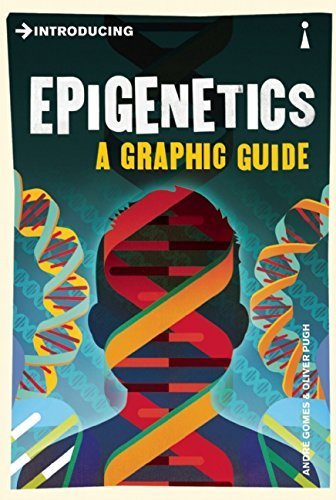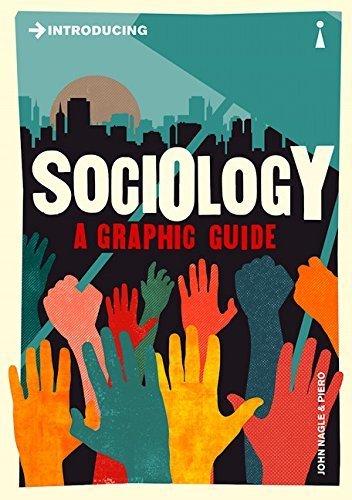


Books in series

Introducing Psychology
A Graphic Guide to Your Mind & Behaviour
1994

Introducing Logic
A Graphic Guide
2001

Introducing Buddha
A Graphic Guide
1991

Introducing Economics
A Graphic Guide
2011

Introducing Marxism
A Graphic Guide
2004

Introducing Nietzsche
A Graphic Guide
1997

Introducing Statistics
A Graphic Guide
2005

Introducing Feminism
A Graphic Guide
2003

Introducing Linguistics
A Graphic Guide
1996

Introducing Epigenetics
A Graphic Guide
2017

Introducing Jung
A Graphic Guide
1992

Capitalism
A Graphic Guide
2010

Introducing Time
1997

Introducing Psychoanalysis
A Graphic Guide
1996

Introducing Mathematics
A Graphic Guide
1995

Introducing Sociology
A Graphic Guide
2017

Introducing Islam
A Graphic Guide
1994

Introducing Fractal Geometry
1996

Introducing Wagner
A Graphic Guide
1995

Introducing Fascism
A Graphic Guide
1993

Introducing Jesus
A Graphic Guide
1993

Introducing Infinity
A Graphic Guide
2012

Introducing Foucault
A Graphic Guide
1997

Intro to Philosophy
1999

Introducing Postmodernism
A Graphic Guide to Cutting-Edge Thinking
1995

Introducing Aesthetics
A Graphic Guide
2007

Introducing Slavoj Zizek
A Graphic Guide
2011

Introducing Game Theory
A Graphic Guide
2017

Introducing Quantum Theory
A Graphic Guide to Science's Most Puzzling Discovery
1992

Introducing Particle Physics
A Graphic Guide
2014

Introducing Artificial Intelligence
A Graphic Guide
2007

Introducing Critical Theory
A Graphic Guide
1997

Introducing Political Philosophy
A Graphic Guide
2003

Introducing Continental Philosophy
A Graphic Guide
2013

Introducing Kierkegaard
A Graphic Guide
1999

Introducing Shakespeare
A Graphic Guide
1997

Introducing the Enlightenment
A Graphic Guide
1997

Introducing Philosophy of Science
A Graphic Guide
1998

Introducing Melanie Klein
A Graphic Guide
1997

Introducing Keynes
A Graphic Guide
1990

Introducing Alain Badiou
A Graphic Guide
2014

Introducing Anthropology
1656

Introducing Baudrillard
1996

Introducing Bertrand Russell
A Graphic Guide
1998

Barthes for Beginners
1997

Introducing Chaos
A Graphic Guide
1998

Introducing Chomsky
A Graphic Guide
1993

Introducing Derrida
1993

Introducing Descartes
1998

Introducing Ethics
1993

Introducing Evolution
A Graphic Guide
1997

Introducing Evolutionary Psychology
A Graphic Guide
1999

Introducing Existentialism
A Graphic Guide
2001

Introducing Freud
1979

Introducing Genetics
A Graphic Guide
1993

Introducing Hegel
A Graphic Guide
1996

Introducing Heidegger
1994

Joyce for Beginners
1994

Kant Para Principiantes
1996

Introducing Lacan
A Graphic Guide
2000

Introducing Machiavelli
A Graphic Guide
1999

Introducing Modernism
2001

أقدم لك..أفلاطون
2000

Introducing Romanticism
A Graphic Guide
2000

Introducing Rousseau
1997

Introducing Sartre
A Graphic Guide
2002

Introducing Stephen Hawking
1991

Introducing Thatcherism
A Graphic Guide
1997

Introducing The Freud Wars
2002

Introducing Walter Benjamin
A Graphic Guide
1994

Introducing Wittgenstein
A Graphic Guide
1992

Tolkien For Beginners
2022

Introducing the Universe
1990

Darwin for Beginners
1982
Authors

I hold a B.A. (University of California at Santa Cruz, 1978, in Psychology, with highest honours), M.Sc. (L.S.E., 1980, in Logic and Scientific Method), and Ph.D. (University College London, 1987, in the History and Philosophy of Science). Since September 2006 I have been a Lecturer (0.5) in Religious Studies at the University of Kent (Canterbury), where I teach in the MA programme on the Cultural Study of Cosmology and Divination. From 2002-06 I was a Lecturer (0.5) at the Sophia Centre, Bath Spa University College, where I co-taught the MA in Cultural Astronomy and Astronomy. I have reviewed books for History Today, New Statesman, The Guardian, The Independent and (most often) the Times Literary Supplement; appeared on two television programmes; and taken part in two programmes on BBC Radio Four. I also appear in interviews of two of the three extended New Line DVD’s on The Lord of the Rings. My ongoing project (when I get time) concerns enchantment as a common but little-mentioned human experience – one which touches on and connects a wide range of strange bedfellows: nature, erotic communion, art, divination and spirituality. It is influenced by the work of Max Weber and succeeding critical theorists, as well as other writers such as as J.R.R. Tolkien, Lucien Lévy-Bruhl, David Abram, Sean Kane, Val Plumwood, Bruno Latour and Eduardo Viveiros de Castro. I am also very interested in related issues such as the nature of truth, metaphor, embodied phenomenology, pluralism and post-secularism.

Brian's latest books, Ten Billion Tomorrows and How Many Moons does the Earth Have are now available to pre-order. He has written a range of other science titles, including the bestselling Inflight Science, The God Effect, Before the Big Bang, A Brief History of Infinity, Build Your Own Time Machine and Dice World. Along with appearances at the Royal Institution in London he has spoken at venues from Oxford and Cambridge Universities to Cheltenham Festival of Science, has contributed to radio and TV programmes, and is a popular speaker at schools. Brian is also editor of the successful www.popularscience.co.uk book review site and is a Fellow of the Royal Society of Arts. Brian has Masters degrees from Cambridge University in Natural Sciences and from Lancaster University in Operational Research, a discipline originally developed during the Second World War to apply the power of mathematics to warfare. It has since been widely applied to problem solving and decision making in business. Brian has also written regular columns, features and reviews for numerous publications, including Nature, The Guardian, PC Week, Computer Weekly, Personal Computer World, The Observer, Innovative Leader, Professional Manager, BBC History, Good Housekeeping and House Beautiful. His books have been translated into many languages, including German, Spanish, Portuguese, Chinese, Japanese, Polish, Turkish, Norwegian, Thai and even Indonesian.

Librarian note: There is more than one author in the GoodReads database with this name. This profile may contain books from multiple authors of this name For other authors of this name, see:

Robert Lawrence "Larry" Trask was Professor of Linguistics at the University of Sussex in England. He was an authority on the Basque language: his book The History of Basque (1997) is an essential reference on diachronic Basque linguistics and probably the best introduction to Basque linguistics as a whole. He was also an authority on historical linguistics, and had written about the problem of the origin of language. He also published two introductory books to linguistics: Language: The basics (1995) and Introducing Linguistics (coauthored with Bill Mayblin) (2000), and several dictionaries on different topics of this science: A dictionary of grammatical terms in linguistics (1993), A dictionary of phonetics and phonology (1996), A student's dictionary of language and linguistics (1997), Key concepts in language and linguistics (1999), The dictionary of historical and comparative linguistics (2000) and The Penguin dictionary of English grammar (2000). He was at work compiling an etymological dictionary of Basque when he died, posthumously published by Max W. Wheeler (Etymological Dictionary of Basque, 2008).

Ziauddin Sardar has written or edited 45 books over a period of 30 years, many with his long-time co-author Merryl Wyn Davies. Recent titles include Balti Britain: a Journey Through the British Asian Experience (Granta, 2008); and How Do You Know: Reading Ziauddin Sardar on Islam, Science and Cultural Relations (Pluto, 2006). The first volume of his memoirs is Desperately Seeking Paradise: Journeys of a Sceptical Muslim (Granta, 2006). His recent television work includes a 90-minute documentary for the BBC in 2006 called 'Battle for Islam'. Sardar's online work includes a year-long blog on the Qur'an published in 2008 by The Guardian newspaper. Sardar is a Visiting Professor of Postcolonial Studies in the Department of Arts Policy and Management at City University London and is Editor of the forecasting and planning journal, Futures. He is also a member of the UK Commission on Equality and Human Rights. His journalism appears most often in The Guardian and The Observer, as well as the UK weekly magazine, New Statesman. In the 1980s, he was among the founders of Inquiry, a magazine of ideas and policy focusing on Muslim countries. His early career includes working as a science correspondent for Nature and New Scientist magazines and as a reporter for London Weekend Television.
(from wikipedia http://en.wikipedia.org/wiki/Ziauddin... )<< — *You can know more from his own site: http://www.ziauddinsardar.com/Biograp...


Darian Leader is a British psychoanalyst and author. He is a founding member of the Centre for Freudian Analysis and Research (CFAR). Darian Leader is President of the College of Psychoanalysts, a Trustee of the Freud Museum, and Honorary Visiting Professor in Psychoanalysis at Roehampton University. From Wikipedia:http://en.wikipedia.org/wiki/Darian_L...



NIGEL LESMOIR-GORDON I came into this world in the midst of the Second World War, appearing among the soaring academic towers of Cambridge – the last outpost of ‘civilisation’ before the black-soiled, windswept fens ran their endless way up to King’s Lynn and The Wash. I grew up in the austere and reactionary spirit of post-war England. People felt lucky to be alive. So many had died and there were shortages. Most of our ships had been sunk and we lived under the heavy-hanging threat of nuclear annihilation. By the time I had made it into my teens Cambridge had blossomed and become prosperous and I grew up in a privileged world. I was 13 when I went off to board at Oundle School and Elvis Presley’s Heartbreak Hotel burst incandescently upon the world. I began writing at Oundle and published poems and short stories in the UK, the USA and in France. I toured the UK performing with my poetry & jazz group. My interest in film took me to the London School of Film Technique in 1965. When I left Cambridge to go to the school I moved into a flat in Cromwell Road, South Kensington – the infamous ‘101’. When David Gale wrote about 101 in The Independent he recalled: “As the 60s began to generate heat, I found myself running with a fast crowd. I had moved into a flat near the Royal College of Art. I shared the flat with some close friends from Cambridge, including Syd Barrett, who was busy becoming a rock star with Pink Floyd. A few hundred yards down the street at 101 Cromwell Road, our preternaturally cool friend Nigel was running the hipster equivalent of an arty salon. Between our place and his, there passed the cream of London alternative society - poets, painters, film-makers, charlatans, activists, bores and self-styled visionaries. It was a good time for name-dropping: how could I forget the time at Nigel’s when I came across Allen Ginsberg asleep on a divan with a tiny white kitten on his bare chest? And wasn't that Mick Jagger visible through the fumes? Look, there's Nigel's postcard from William Burroughs, who looks forward to meeting him when next he visits London!” During a weekend spent in Cambridge with old friends as part of my experimental work at film school I shot the now cult-movie classic Syd Barrett’s First Trip. When I joined the industry as an editor I worked for Hugh Hudson, director of Chariots of Fire, on TV commercials and documentaries. The film Performance was produced from his Chelsea studios. In 1968 I was commissioned by Mick Jagger to co-write a screenplay with Christopher Gibbs (the set designer on Performance) called The Quest. Marianne Faithfull writes about this project in her biography Faithfull. Mick, Keith and Marianne were already cast and keen to make it. The script we wrote drew on Arthurian legend, Celtic mythology and romantic poetry. Donovan had been writing music for the film and was disappointed when the project stalled due to other Rolling Stones commitments. To make up for this he suggested that I produce and direct a film of him making music sailing through the islands of the Aegean Sea with a small acoustic band. The band was called Open Road and the completed 30-minute film was There is an Ocean. I then moved to the BBC as an editor, cutting dramas and documentaries for two years. I went on to work with Pink Floyd, 10cc, Squeeze, Rainbow, Joe Cocker, Big Country, Wings, Paul Nicholas and Leo Sayer amongst others in the 70’s. I concentrated on commercials and corporate videos throughout the 80s. I wrote and directed Regiment a documentary about the Royal Air Force’s Infantry Regiment before I made the award-winning television documentary The Colours of Infinity, presented by Sir Arthur C. Clarke with music by David Gilmour of Pink Floyd in 1993. The Colours of Infinity has been broadcast in over fifty territories. It brought the Mandelbrot set and the subject of fractals to the attention of the general public for the first time. I also directed The Bobby Charlton Story

David Orrell, Ph.D. is a scientist and author of popular science books. He studied mathematics at the University of Alberta, and obtained his Ph.D. from Oxford University on the prediction of nonlinear systems. His work in mathematical modeling and complex systems research has led him to diverse areas such as weather forecasting, particle accelerator design, economics, and cancer biology. He has authored or coauthored research papers for journals including Journal of the Atmospheric Sciences, Nature Genetics, the International Journal of Bifurcations and Chaos, and Physica D. He is the author of Economyths and The Other Side of the Coin: The Emerging Vision of Economics and Our Place in The World about new economic theories; and The Future of Everything: The Science of Prediction about prediction in weather, genetics, and economics, which was a national bestseller and finalist for the 2007 Canadian Science Writers' Association book award. Foresight called it "An engaging, as well as deeply insightful, discussion on the difficult task of prediction ... it can change the way you view forecasting." David has been a guest on radio shows including Coast to Coast AM, NPR, and BBC, and his work has been featured in print media such as New Scientist and the Financial Times. He has spoken at many conferences and events including the Art Center Global Dialogues on Disruptive Thinking. He currently lives in Oxford, UK, where he runs a mathematical consultancy Systems Forecasting. Awards Finalist: Canadian Science Writers' Association book award (2007) Finalist: National Business Book Award (2011)

Dr. Markos earned his B.A. in English and History from Colgate University and his M.A. and Ph.D. in English from the University of Michigan. At the University of Michigan, he specialized in British Romantic Poetry, Literary Theory, and the Classics. He has taught at Houston Baptist University since 1991, where he is Professor in English and holds the Robert H. Ray Chair in Humanities.



Stuart Clink Hood was a Scottish novelist, translator, a television producer and Controller of BBC Television. Hood joined the Communist Party when he was a student at the University of Edinburgh and remained all his life a man of the left, later joining the Workers Revolutionary Party.

Librarian’s note: There is more than one author in the Goodreads database with this name. John Stephen Jones is a Welsh geneticist and from 1995 to 1999 and 2008 to June 2010 was Head of the Department of Genetics, Evolution and Environment at University College London. His studies are conducted in the Galton Laboratory. He is also a television presenter and a prize-winning author on the subject of biology, especially evolution. He is one of the contemporary popular writers on evolution. In 1996 his writing won him the Royal Society Michael Faraday Prize "for his numerous, wide ranging contributions to the public understanding of science in areas such as human evolution and variation, race, sex, inherited disease and genetic manipulation through his many broadcasts on radio and television, his lectures, popular science books, and his regular science column in The Daily Telegraph and contributions to other newspaper media".

Tom Whyntie was born in 1983. This makes him slightly younger than the W and Z gauge bosons, the force-carrying particles of the weak nuclear force. (Well, technically these have existed in their current form since a microsecond or so after the Big Bang, but it's been thirty odd years since we discovered them.) After reading Natural Sciences at Sidney Sussex College, University of Cambridge (specialising in Experimental and Theoretical Physics), Tom accepted a place at Imperial College London to complete a PhD with the High Energy Physics group. He was assigned to the ironically-named "Compact Muon Solenoid" (CMS) experiment, a 15,000 tonne, cathedral-sized digital camera buried in Cessy, France, that would take pictures of the high energy particle collisions that would take place at the Large Hadron Collider. His thesis focussed on the search for supersymmetry - a theory which provided candidate particles for Dark Matter, which supposedly makes up a missing 26% of the Universe - in the LHC's first data. He didn't find it. However, a null result is still a result - and in 2011 was awarded his PhD, after which he briefly worked as a post-doctoral researcher on the upgrade of the CMS silicon detector system. However, in early 2012 an opportunity arose that would allow him to combine his love of both doing physics and talking about physics. The CERN@school project takes cutting-edge particle detectors developed by CERN's Medipix Collaboration into the classroom to allow students and teachers to conduct their own, original physics research. In June 2012 Tom became the full-time scientist for the project, based at the Simon Langton Grammar School for Boys in Canterbury, Kent, and the Particle Physics Research Centre (PPRC) at Queen Mary, University of London. Tom is a regularly speaks about particle physics at science festivals and events around the country, notably the Times Cheltenham Science Festival and the British Science Association's British Science Festival. With Dr Andrew Pontzen, a cosmologist at University College, London, he also contributes to the YouTube "HeadSqueeze" channel's SciGuides, presenting a light-hearted look at the great questions in experimental and theoretical physics.


